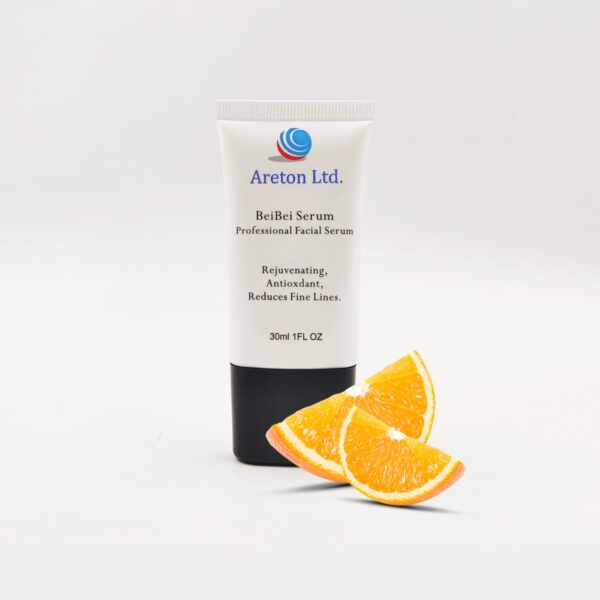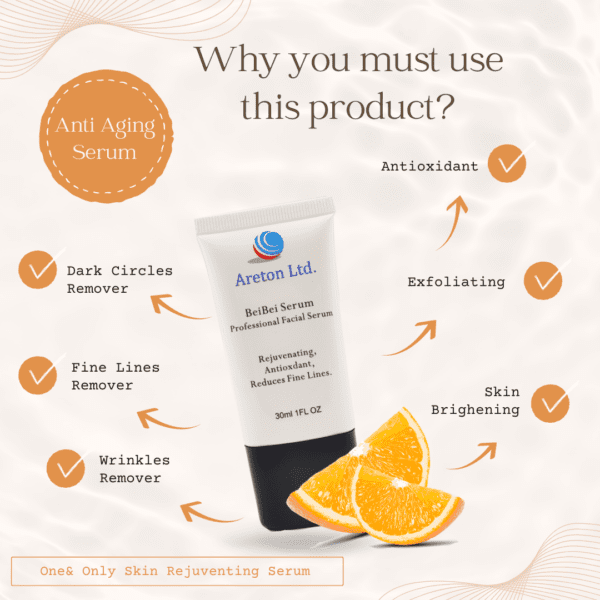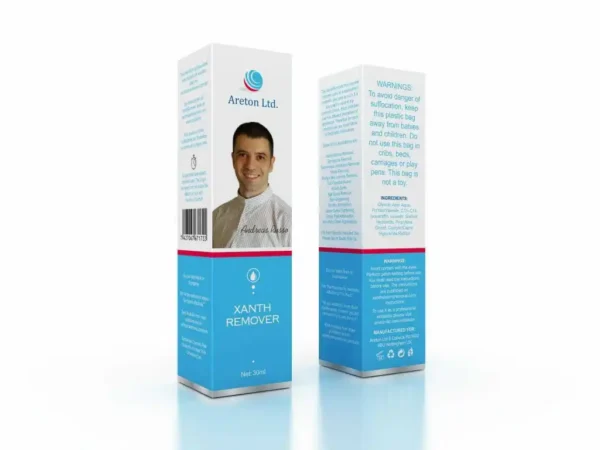[vc_row][vc_column][vc_column_text]
Glycolic Acid
Retinol, vitamin C, and hyaluronic acid are a few anti-aging substances that receive a lot of media attention. However, glycolic acid also belongs to the group of substances that maintain your skin looking smooth, supple, and bright.
Although glycolic acid is frequently found in skin care products and in-office chemical peels, not everyone is aware of its potential efficacy as a component of a programme. Discover this incredible ingredient’s inner workings and how you may use it to address some of your most pressing problems.[/vc_column_text][vc_single_image image=”8964″ img_size=”full”][vc_empty_space][/vc_column][/vc_row][vc_row][vc_column][vc_column_text]
What Is Glycolic Acid ?
[/vc_column_text][vc_row_inner][vc_column_inner width=”1/2″][vc_column_text]Alpha hydroxy acids (AHAs) like glycolic acid are frequently used for acne, hyperpigmentation, and anti-aging. Glycolic acid is regarded as the gold standard of AHAs because of its keratolytic characteristics, which remove dead skin cells from the skin’s surface and minimise fine lines and wrinkles, lighten hyperpigmentation, and clear acne. Glycolic acid, which is derived from sugarcane, has the chemical capacity to attract moisture to itself and is also a humectant. This indicates that glycolic acid attracts moisture to your freshly exfoliated skin, which, when used properly, not only moisturises dry skin but also delays the appearance of new fine lines and wrinkles. Glycolic acid also strengthens the other elements in your skin care products by increasing their penetration. Because of her numerous superpowers, glycolic acid is beloved by us, although her abilities can be intimidating at first. When using glycolic acid, you may experience mild stinging, redness, and burning until your skin adjusts to it. You should always wear sunscreen when using this component because it increases your skin’s sensitivity to UV rays. The sibling of glycolic acid, lactic acid, is a fantastic substitute if you have sensitive skin. Overall, glycolic acid is a top-tier substance that will boost your skin care regimen and delivers a powerful punch.[/vc_column_text][/vc_column_inner][vc_column_inner width=”1/2″][vc_empty_space][vc_column_text][/vc_column_text][/vc_column_inner][/vc_row_inner][/vc_column][/vc_row][vc_row][vc_column][vc_empty_space][vc_column_text]
What Else Does Glycolic Acid Do ?
When treating skin conditions like psoriasis, keratosis pilaris, hyperkeratosis, and blackheads, among others, some doctors prefer glycolic acid to other acids. In addition to relieving dryness and scaling, it also eliminates excess oil.
How to use glycolic acid
The majority of consumers purchase over-the-counter goods like moisturisers, serums, and cleansers. The only caveat is that you have to start fairly slowly if someone has sensitive skin. Applying one glycolic acid product every other day can help you ease into a routine, and you may gradually increase the dosage once you feel your skin can handle it. (For me, I increased the dosage to once every night after using glycolic every other day for two weeks.) AHA also makes you much more sensitive to the sun, so make sure to use sunscreen every single day.[/vc_column_text][vc_empty_space][/vc_column][/vc_row][vc_row][vc_column][vc_column_text]When a person is ready to try glycolic acid, they should do the following:
[/vc_column_text][vc_row_inner][vc_column_inner][vc_column_text]1. Do a patch test: On a small patch of skin that is not on the face, test the product. It is possible to determine whether the skin will accept it in this manner. Apply the cream on your face if no symptoms appear.
2. Start slowly: It is preferable to use glycolic acid sparingly at initially and at a low concentration. Following the directions on the product label, a person can gradually increase their use if the skin feels smoother and doesn’t exhibit any signs of an unpleasant response. Use it only as directed by a doctor or the instruction.
3. Choose one product: There is no requirement to utilise a whole line of glycolic acid-containing skin care products. To enjoy the benefits, only one product is required. One new product at a time also makes it possible to monitor its effectiveness.
4. Use at night: Some people prefer to use glycolic acid at night because it increases the risk of sunburn.
5. Apply sunscreen: When using AHAs, always finish your routine by applying sunscreen before going outside. Wearing sunscreen every day throughout the course of the therapy and for at least a week afterward is advised by the FDATrusted Source.[/vc_column_text][/vc_column_inner][/vc_row_inner][/vc_column][/vc_row][vc_row][vc_column][vc_column_text]
Glycolic Acid Skin Care Benefit
[/vc_column_text][vc_row_inner][vc_column_inner width=”1/2″][vc_column_text]
Reduces Wrinkles and Fine Lines
Glycolic acid effectively exfoliates the top layer of skin to decrease the appearance of fine lines and wrinkles. This exfoliation quickens skin cell renewal, and quickened skin cell renewal both boosts collagen formation and the skin’s capacity to retain moisture naturally (two keys to preventing and reducing fine lines and wrinkles). The amount of wrinkles and their length were both reduced by glycolic acid, according to a study on the substance’s effectiveness in reducing wrinkles. Glycolic acid removes dead skin cells from the skin’s surface by dissolving them, which flattens the skin’s surface. The appearance of fine lines and wrinkles is lessened by this flattening effect.
[/vc_column_text][/vc_column_inner][vc_column_inner width=”1/2″][vc_single_image image=”8969″ img_size=”full”][/vc_column_inner][/vc_row_inner][vc_column_text]Be aware that glycolic acid, like all other substances for fine lines and wrinkles, only works to make fine lines and wrinkles appear less noticeable. Be wary of any advertising that implies that wrinkles and fine lines may be “removed” or “erased”. If your fine lines and wrinkles appear to “disappear,” just remember that they still exist beneath the surface and will become visible after the effects of the glycolic acid wear off. This is why anti-aging skin care should be started early to avoid fine lines and wrinkles in the first place, and why constant application is essential.[/vc_column_text][/vc_column][/vc_row][vc_row][vc_column][vc_column_text]
Smoothes and Brightens the Skin
Glycolic acid, the holy grail of exfoliation, breaks down ties between dead skin cells by penetrating deep beneath the surface of your skin. Your young, baby skin, which is brighter, smoother, and softer, comes out thanks to glycolic acid.
Little and Powerful
The strongest of the alpha hydroxy acids, glycolic acid is the most often utilised AHA for anti-aging because, when applied properly, it can provide excellent benefits. Glycolic acid’s power originates from its tiny molecular size (it has one of the smallest AHA molecule sizes found in skin care). Smaller molecule sizes of glycolic acid allow it to penetrate your skin’s surface more deeply than those of other AHAs (like lactic acid). By improving the thickness and suppleness of your skin, glycolic acid’s deep penetration boosts the production of collagen, which reduces the appearance of fine lines and wrinkles.[/vc_column_text][/vc_column][/vc_row][vc_row][vc_column][vc_column_text]
Little and Powerful
The strongest of the alpha hydroxy acids, glycolic acid is the most often utilised AHA for anti-aging because, when applied properly, it can provide excellent benefits. Glycolic acid’s power originates from its tiny molecular size (it has one of the smallest AHA molecule sizes found in skin care). Smaller molecule sizes of glycolic acid allow it to penetrate your skin’s surface more deeply than those of other AHAs (like lactic acid). By improving the thickness and suppleness of your skin, glycolic acid’s deep penetration boosts the production of collagen, which reduces the appearance of fine lines and wrinkles.
Hydrates Dry Skin
[/vc_column_text][vc_row_inner][vc_column_inner width=”1/2″][vc_column_text]Dry skin is hydrated while also being exfoliated by glycolic acid. Glycolic acid is a humectant, which means that it chemically draws water molecules to itself. This means glycolic acid can rehydrate the skin and give it fresh, delicious moisture. We adore humectants because healthy skin is skin that is well-moisturized, but they may also be a double-edged sword. This is due to the fact that humectants draw moisture from both deeper layers of skin and the air (particularly if it’s wet). Humidity-induced humectants will draw in additional water when there is more moisture in the air than on your skin. That’s fantastic! On the other hand, it’s a whole different tale. In drier regions, where there is less moisture in the air than on your skin, humectants will draw in whatever water is available, which includes water molecules from deeper layers of your skin. This is a concern since your humectant will only be able to transfer moisture from deep within your skin to the skin’s surface, where it runs the risk of swiftly evaporating off your face into the dry air. Apply another moisturiser or cream over your glycolic acid product that is more occlusive (thicker) to prevent this. This occlusive layer will aid in retaining moisture on your skin (trap it in). Don’t skip this important step! Glycolic acid should not mistakenly dry out the skin or cause more harm than good.[/vc_column_text][/vc_column_inner][vc_column_inner width=”1/2″][vc_single_image image=”8972″ img_size=”full”][/vc_column_inner][/vc_row_inner][/vc_column][/vc_row][vc_row][vc_column][vc_column_text]
Fades Hyperpigmentation
Dark spots, age spots, freckles, and melasma are mild hyperpigmented conditions that are lightened with glycolic acid. Glycolic acid has also been investigated as a successful acne scar therapy. How? The skin beneath hyperpigmentation is less pigmented and is darker on the skin’s surface. In order to show a new layer of skin with a more even skin tone, glycolic acid exfoliates and eliminates darker dead skin cells from the surface of your skin. With regular use, this procedure successfully reduces hyperpigmentation.
Fights Acne
Glycolic acid treats acne by removing the dead skin cells that frequently clog pores and cause outbreaks. Because glycolic acid is a keratolytic, it can disintegrate dead skin cells on the skin’s surface and unclog any clogged pores. Glycolic acid has been demonstrated in a recent evaluation of glycolic acid peel therapy to eliminate existing acne and maintain clear skin by peeling away dead skin cells that block pores and cause breakouts. Azelaic acid and benzoyl peroxide are two other keratoytics to consider if acne is your main health concern (good for cystic acne). Salicylic acid is used to manage oil or treat sensitive skin.[/vc_column_text][/vc_column][/vc_row][vc_row][vc_column][vc_column_text]
Safe for Lipids
Dead skin cells are removed from the skin’s surface by glycolic acid, and this exfoliation might cause mild discomfort until your skin becomes accustomed to the substance. It’s vital to understand that glycolic acid does not remove the lipids from your skin, so don’t panic if you have any moderate irritation. Lipids are the good fatty acids that provide your skin its bouncy barrier, which keeps contaminants out and moisture in. According to research, even though glycolic acid dissolves dead skin cells, you may rest certain that your lipids will not be affected and that the epidermal barrier will continue to operate normally.
The above holds true for OTC products. If you are looking for prescription strength glycolic acid peels, consult an esthetician or dermatologists for best practices to protect your lipid barrier. Remember, you really don’t want to damage your lipids.
Summary
A chemical exfoliator called glycolic acid can be found naturally in some plants. Although cosmetic companies often employ glycolic acid that is produced in a lab, many skin care products and treatments contain it.
This substance offers moisturising, anti-aging, and exfoliating qualities. It raises the levels of compounds that aid in collagen formation and skin regeneration. To prevent negative consequences, it is crucial to utilise it properly.
A person should speak with a doctor before using a product that contains glycolic acid. When beginning a treatment, it is preferable to go slowly and apply sunscreen whenever you are outside for a while after the treatment.[/vc_column_text][/vc_column][/vc_row][vc_row][vc_column][vc_empty_space][vc_column_text]
Glycolic acid based Areton Products :
[/vc_column_text]




